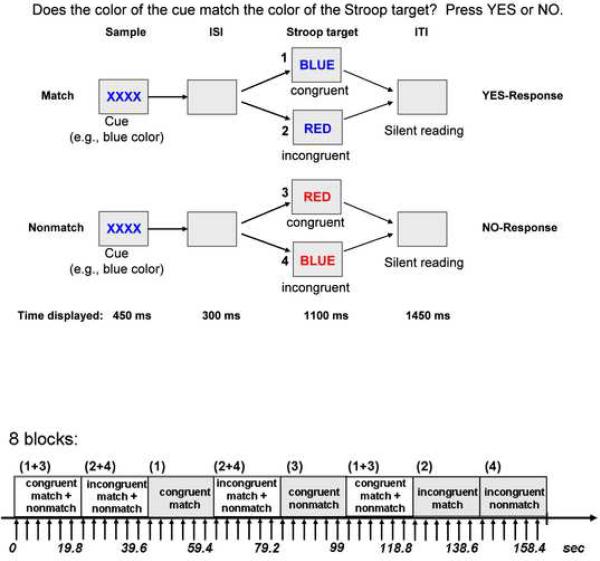Figure 1.
Top: Stroop Match-to-Sample design, illustrating 4 conditions: incongruent-match, congruent-match, incongruent-nonmatch, and congruent-nonmatch. A color cue (XXXX) presented for 450ms was followed by an incongruent or congruent Stroop target stimulus that appeared for 1100ms after an inter-stimulus interval (ISI) of 300ms. The inter-trial interval (ITI) was 1450 ms. Subjects matched the color (red, green or blue) of the cue to the ink color of the Stroop stimulus. Bottom: fMRI block design illustrated for 8 blocks. Each block consisted of 6 trials (9 TRs). Each block lasted for of 19.8 sec. Stroop stimuli in each block were either congruent (word BLUE written in blue font) or incongruent (word BLUE written in red font). In half of the blocks cue-target color either matched or did not match, in the other half of the block match and nonmatch trials were mixed. In total 36 blocks were presented in pseudo-random order ensuring that each condition was equally often represented.

